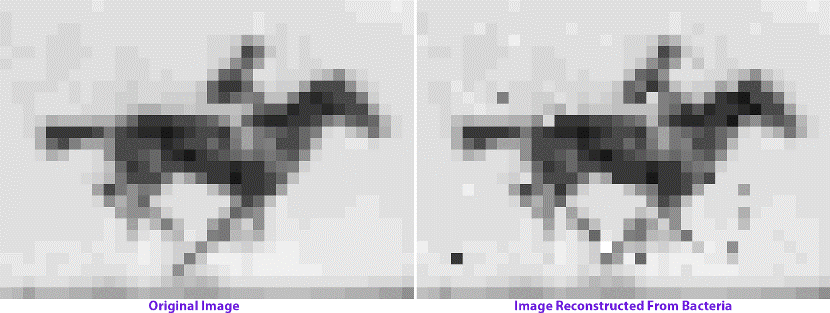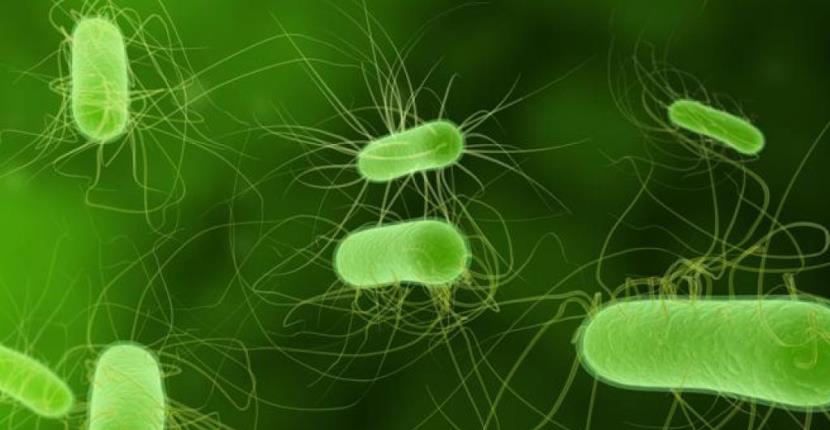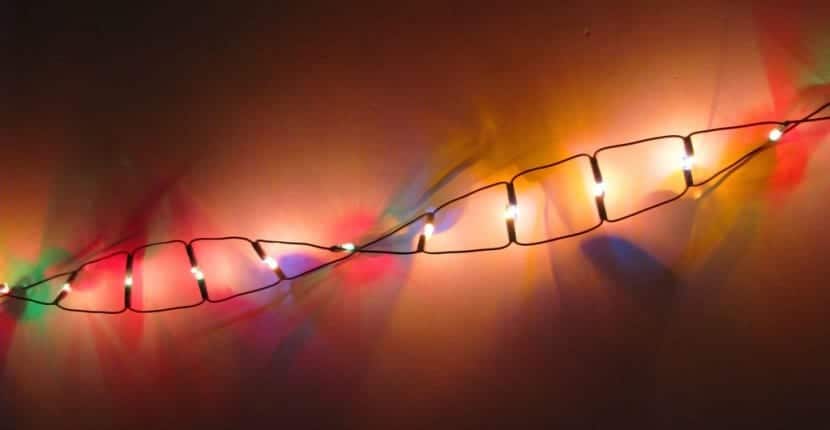
Just a few weeks ago we had the opportunity to speak in detail about one of the most modern technologies created by man, such as CRISPR-Cas9. Perhaps the name does not sound like anything to you, although, as a very short summary, tell you that thanks to it we can now make a kind of 'genetic cutter' That in opens a huge door to a world full of possibilities.
Even so and despite the fact that the advances that are taking place are more than striking, such as the fact that a group of scientists from the Biomedical Engineering faculty at Harvard University have got save a GIF file to fecal bacteria DNA, The truth is that we still do not know for sure all the benefits that this technique can offer us, much less the cons of it, such as uncontrolled mutations, something that several groups of researchers already alert.

They choose what is considered the first film in the world to be stored in DNA of fecal bacteria
How could it be otherwise, despite the fact that surely for the preliminary tests the team worked with other types of data, for the demonstration of their success they decided to use one of the most famous GIFs on the planet, which we could perfectly classify as the first film created by human beings.
I'm talking about a GIF where you can see a horse in motion. A kind of movie created by Edward Muybridge, commissioned, upon payment of a large amount of money of the time, by Lelan stanford, to show that at a specific moment during a horse's race, it keeps all four legs in the air.
As often happens with many of the technologies that eventually end up revolutionizing the world, it all starts with a bet between the billionaire Lelan stanford y James keene, at that time president of the San Francisco Stock Exchange, where Lelan Stanford claimed that during the race, a horse kept its legs in the air at a specific moment while James Keene believed the opposite.
With this in mind and a great deal of funding behind, Eadward Muybridge built an apparatus that was christened zoopraxinoscope whose utility was that of take dozens of images in a row in order to capture the horse's movements. As a result, we have a kind of film that has now been used to create the first GIF stored in DNA from fecal bacteria.

Thanks to the use of CRISPR-Cas9, human beings can now store data in strands of living DNA
Returning to the work harvested by a team of researchers from Harvard University, we find that they have managed to save this GIF, as it has been published by the magazine Nature, in DNA of fecal bacteria thus demonstrating something that has been talked about for a long time, that DNA is a very good hard drive where you can store any type of information.
Although there are many scientists who spoke about the impressive storage possibilities What a DNA chain can offer, the truth is that until the CRISPR-Cas9 technology, it seemed that we would still have to wait several decades to be able to store data in a DNA chain. Without a doubt, a new example of how a technology can revolutionize the world, especially at a time when human beings are beginning to have problems storing the immense amount of data that we are capable of generating.

It is only necessary to sequence the genome of the DNA chain to recover the information that we have previously stored in it.
One of the main milestones this research team has achieved has been the power work with DNA from living cells, instead of as up to now that something similar had been achieved but with DNA from dead cells. As has been published in NatureNucleotides appear to have been used to produce the code related to the individual pixels of each of the images that were intended to be saved.
To be able to store these data, the team of scientists had to determine which sequences are the best to store this data within the genome, which, on the other hand, represents a new improvement for the use of this tool. When they wanted to recover the information stored in the DNA of the fecal bacteria, they only had sequence the genome, a technology that roughly allows DNA to be read. As a final detail, it should be noted that during the tests a 90% technique accuracy.